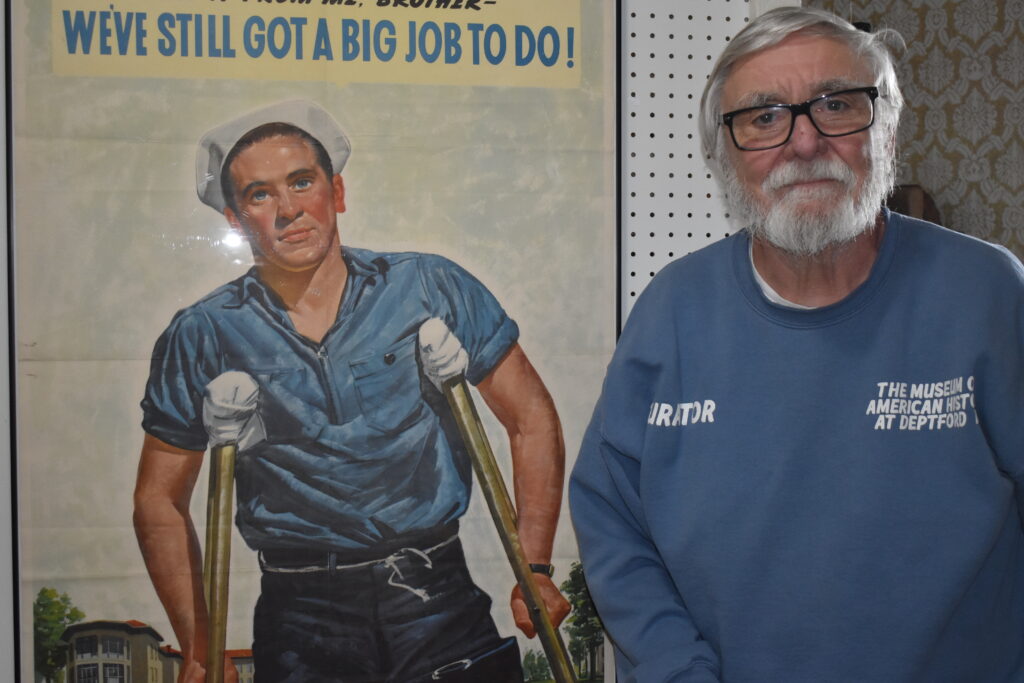
People are already thinking of taking pleasant and relaxing vacations to the Jersey Shore this summer.
But it was not peaceful along the beaches in 1942, when German U-boats lurking on the East Coast were sinking ships loaded with military supplies from America to England and Russia.
At night, residents of Atlantic City, Sea Isle, Wildwood and other now resorts could possibly see an orange glow out on the Atlantic Ocean – an oil tanker torpedoed by a Nazi submarine used to send spies into the United States.
“The German submarines would come close to the shore and the spies would take launch boats to the beach,” said Jeffrey Norcross, founder and curator of the Museum of American History in Deptford.
According to New Jersey military historian and author Joseph Bilby, when America entered the war in 1941, it became open season for U-boat captains leading ships off the East Coast. From January through August 1942, German torpedoes sunk a dozen or more ships off the coast of New Jersey, with many more attacked off North Carolina, Virginia and the Gulf of Mexico.
But the submarines – and the spies – did not go unnoticed, noted Norcross, as he gave a tour of the World War II exhibit now at the museum through June 2.
On the second floor was a display of various American, British, German and Japanese helmets the soldiers wore in Europe and Asia. One was worn by a U.S. Army Air Force observer who was part of the Aircraft Warning Service (AWS) established in May 1941.
Norcross explained that the observers would look for submarines near the shore and spies coming onto the beach, as well as long-range airplanes that could possibly hit the U.S.
“During WWII, the East and West coasts were protected by civilian volunteer spotters, who were members of the Ground Observer Corps, a component of the AWS,” notes the Air Military Command Museum website. “Almost one million men and women volunteer ‘soldiers out of uniform’ served in the AWS.”
Other displays in the museum exhibit include weapons, uniforms, flags and coinage. The homefront room contains ration books, war bonds and recruiting posters.
“A lot of women worked in the factories while the men were at war, like the Frankford Arsenal in Philadelphia,” said Norcross, whose father Richard was a sergeant in the U.S. Army serving on an island in the Arctic Ocean.
“World War II was a war that defined an era in American and world history.”
Other highlights of the exhibit include planks of the original teak wood from the USS Missouri and USS New Jersey battleships – the latter a Camden museum currently in dry dock in Philadelphia – and a U.S. Army buddy tent that Norcross purchased from an Army Navy store 30 years ago and has used on archaeological digs.
He was especially proud of the photos and memorabilia of the late Staff Sgt. John Kalinowski, who was the head of the mechanics that outfitted the bomber Enola Gay before it dropped an atomic bomb on Hiroshima, Japan. Kalinowski’s son Ed is a member of the Deptford board of education.
The exhibit also features leather flight caps; rifles and bayonets used by American, British, German and Japanese forces; and various military uniforms. The museum’s permanent showcase boasts items Norcross discovered as an archaeologist, including artifacts from the pre-Columbian through the Colonial eras, the American Farmstead, antique hand tools and equipment, items from the Pine Barrens and a glass and a fossil exhibit.
The museum is open Thursday, Friday, Saturday and Sunday from 10 a.m. to 3 p.m. For information, call (856) 812-1121 or visit www.southjerseymuseum.org.









